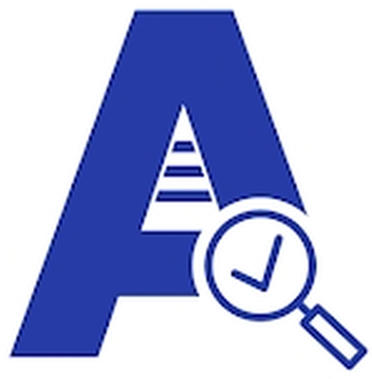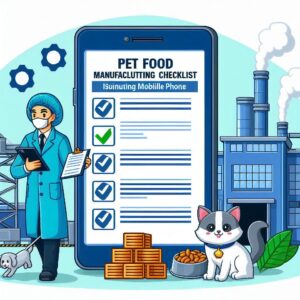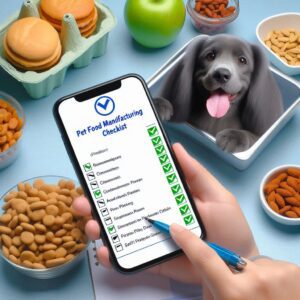SQFI Pet Food Manufacturing Checklist
SQFI Pet Food Manufacturing (Safe Quality Food Institute) provides standards for food safety and quality management systems, ensuring that pet food manufacturers comply with global regulations and maintain high-quality practices. Below is a simplified overview of SQF compliance specifically for pet food manufacturing:
1. Food Safety Plan (HACCP)
- Develop a HACCP Plan: Conduct a hazard analysis to identify potential biological, chemical, and physical hazards specific to pet food production.
- Establish Critical Control Points (CCPs): Identify points in the production process where hazards can be controlled or prevented.
- Monitoring Procedures: Implement monitoring systems to track CCPs and ensure safety measures are effective.
- Corrective Actions: Set procedures for corrective actions when deviations from CCPs occur.
2. Facility Requirements
- Design and Construction: Ensure the facility is built to prevent contamination (e.g., proper ventilation, drainage, pest control).
- Equipment Maintenance: Regular cleaning, calibration, and maintenance of equipment.
- Pest Control: Ongoing monitoring and management of pest control systems to prevent contamination.
- Water and Ice Quality: Use safe, potable water and ice in production and cleaning processes.
3. Personnel Hygiene and Training
- Personal Hygiene Practices: Workers must follow strict hygiene practices, including proper handwashing, wearing protective clothing, and limiting access to sensitive areas.
- Food Safety Training: All personnel should be trained in food safety practices, including allergen control and cross-contact prevention.
- Health Monitoring: Ensure staff are free from illness or symptoms that could contaminate the product.
4. Raw Material and Supplier Controls
- Approved Suppliers: Use ingredients from verified suppliers who meet safety and quality standards.
- Raw Material Testing: Test incoming ingredients for contaminants or other hazards.
- Storage Requirements: Store raw materials at the correct temperature and humidity levels to prevent spoilage and contamination.
5. Allergen Management
- Identify Allergens: Clearly identify and manage allergens within the facility to prevent cross-contact.
- Labeling: Ensure proper allergen labeling on pet food products.
- Dedicated Equipment: Use dedicated equipment and areas to process allergen-free products if necessary.
6. Product Testing and Monitoring
- Microbial Testing: Regular testing for pathogens (e.g., Salmonella, Listeria) in pet food products.
- Physical and Chemical Testing: Conduct physical and chemical testing for consistency, nutrient content, and contamination.
- Shelf-Life Testing: Test for shelf-life stability and ensure that products meet nutritional claims throughout their lifespan.
7. Packaging and Labeling Controls
- Packaging Material Integrity: Ensure packaging materials are safe, clean, and protect the product from contamination.
- Label Accuracy: Labels should clearly state ingredients, nutrition information, and any allergen warnings.
- Traceability: Maintain records to trace ingredients from suppliers to finished products for efficient recall procedures if needed.
8. Product Recall and Withdrawal
- Recall Procedures: Have a system in place for recalling or withdrawing products from the market if a safety issue arises.
- Mock Recall: Periodically perform mock recalls to ensure the effectiveness of your system.
- Documentation: Keep clear records of all recalls and actions taken.
9. Cleaning and Sanitation
- Sanitation Program: Develop a comprehensive cleaning and sanitation program that outlines frequency and procedures.
- Chemical Safety: Use approved cleaning chemicals and store them securely.
- Validation: Regularly validate sanitation procedures to ensure they are effective at reducing contamination risks.
10. SQF Audits and Certification
- Internal Audits: Conduct regular internal audits to verify compliance with SQF standards.
- Third-Party Audits: Prepare for external SQF certification audits by maintaining proper documentation and up-to-date practices.
- Continuous Improvement: Use audit findings to improve your food safety and quality management systems.
Benefits of SQF Certification for Pet Food Manufacturers:
- Market Access: SQF certification opens up opportunities for international trade, as many retailers and buyers require it.
- Risk Mitigation: It reduces the risk of product recalls, contamination, and other safety hazards.
- Consumer Trust: Certification assures customers that your pet food is safe and produced under strict quality controls.
SQFI Pet Food Manufacturing checklist structure ensures that your pet food manufacturing process meets high standards of safety and quality, minimizing risks and maximizing efficiency.
Here’s a SQFI Pet Food Manufacturing Checklist for SQF (Safe Quality Food) compliance using eAuditor Audits & Inspections, which helps you monitor and ensure food safety in pet food production:


